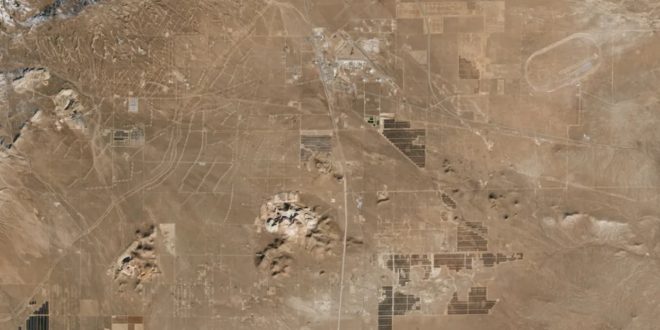The Edwards & Sanborn Solar and Energy Storage plant, located in California’s portion of the Mojave Desert, one of the sunniest regions globally, is now fully operating. It is the biggest solar and battery energy storage project in the world.
The solar farm has about 2 million solar panels and a capacity of 875 megawatts, making it the largest facility of its kind in the US.
The project has achieved 3,287 megawatt-hours of energy storage via the use of more than 120,000 batteries. This storage system enables the facility to maintain a continuous flow of electricity even in times of heavy demand or when there is no sunshine available.
The Edwards & Sanborn Solar and Energy Storage project spans 1,886 hectares (4,660 acres), which is almost one-third the size of Manhattan. Engineers had to install about 724 kilometers (450 miles) of wire to connect the whole system.
The Landsat-9 satellite took a photograph of the location on January 12, 2024, to showcase its huge magnitude just before the grand inauguration. Mortenson, a construction and engineering company, started the project in early 2021. It was launched in February 2023 and reached full operation in January 2024.
When discussing its size and scale, it is crucial to establish certain definitions. The Golmud Solar Park in China has the greatest solar capacity in the world with 2.8 gigawatts, followed closely by the Bhadla Solar Park in India at 2.7 gigawatts.
According to Mortenson, the Edwards Sanborn Solar and Energy Storage project stands out from other projects because it is the biggest solar and battery energy storage installation. It just surpassed Vistra’s project in Moss Landing, California, to become the biggest energy storage site.
Solar power is poised to become a crucial renewable energy source that is aiding in reducing the world’s reliance on fossil fuels, the primary cause of climate change. Nevertheless, solar farm infrastructure does come with its own set of issues.
Solar storage often uses lithium-ion batteries composed of scarce elements such as lithium and cobalt. Mining these metals poses significant environmental risks, endangering local populations and ecosystems.
Enjoying the sun also needs a significant amount of infrastructure. Solar farms have proliferated in the Mojave Desert, with the Riverside East Solar Energy Zone covering 60,700 hectares, which is ten times larger than Manhattan.
The infrastructural development in the Mojave Desert has not only angered Native American tribes with strong spiritual connections to the area but has also significantly disrupted the natural habitat of animals such as the flat-tailed horned toad and the desert tortoise.
 Tech Gadget Central Latest Tech News and Reviews
Tech Gadget Central Latest Tech News and Reviews




